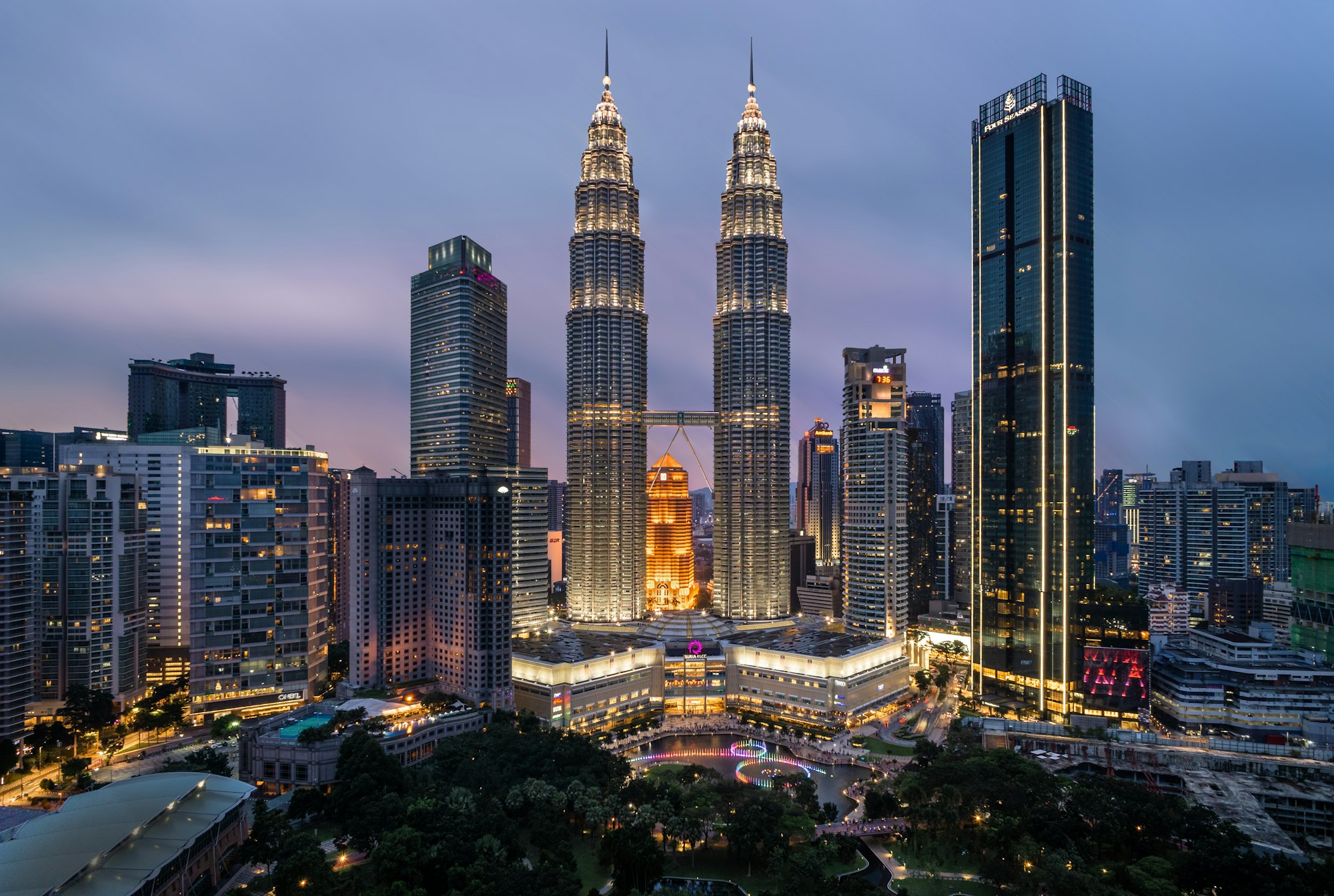Green Tech Financing Scheme (GTFS) in Malaysia & the General Transit Feed (GTFS) in the U.S.
Exploring the success of the Green Technology Financing Scheme (GTFS) in Malaysia and the General Transit Feed Specification (GTFS) in the U.S. & their impact on green technology and public transit, respectively.

Green Technology Financing Scheme (GTFS) in Malaysia
The Green Technology Financing Scheme (GTFS) in Malaysia, launched in 2010, represents a pivotal government initiative to boost green technology. This scheme, managed by the Malaysian Green Technology and Climate Change Corporation (MGTC) and the Credit Guarantee Corporation Malaysia Berhad (CGC), focused on facilitating easier access to green investments[1].
GTFS supported Energy Services Companies (ESCOs) by offering a 2% interest/profit rebate. After a brief discontinuation after the 14th General Election, it was reinstated in March 2019 with an RM 2.0 billion allocation for two years[1]. The scheme has been notably effective in green financing, contributing RM7.5 billion by 2022, including Sharia-compliant funding. Furthermore, the financial sector's commitment to over RM200 billion for environmental, social, and governance (ESG) funding by 2025 highlights its substantial impact[5].
General Transit Feed Specification (GTFS) in the U.S.
The General Transit Feed Specification (GTFS), widely adopted in the U.S., is an open standard facilitating the distribution of transit system information. It enables public transit agencies to share data in a universally accessible format, consumed by various software applications[2].
GTFS comprises two segments: GTFS Schedule and GTFS Realtime. The former includes routes, schedules, fares, and geographic details in simple text files, while the latter offers real-time updates on trip status, vehicle positions, and service alerts[2]. The standard is employed by over 10,000 transit agencies in more than 100 countries, bolstering the efficiency and accessibility of public transit[2].
Comparative Impact on Green Technology and Public Transit
Malaysian and U.S. GTFS initiatives have significantly influenced green technology and public transit.
In Malaysia, the GTFS has spurred green technology growth, promoting green investments and aiding in developing a low-carbon economy[1][5]. Conversely, in the U.S., the GTFS has revolutionized public transit by democratizing transit data, leading to enhanced services, informed planning and policymaking, and increased public transit usage[2].
The Malaysian Green Technology Financing Scheme and the U.S. General Transit Feed Specification exemplify how government initiatives can drive sustainable development and enhance public services. These programs, while differing in focus and execution, both contribute meaningfully to advancing green technology and improving public infrastructure[1][2].
Citations:
[1] MGTC - Green Technology Financing Scheme
[2] GTFS
[5] MOF Malaysia - Green Financing
Further Insights into GTFS Initiatives
Advancements in Malaysia's Green Technology
The GTFS in Malaysia provided financial support and played a crucial role in catalyzing the green technology sector's growth. This scheme encouraged innovation and adopting sustainable practices across various industries, including energy, water, waste management, and transportation. The targeted support for ESCOs underlines the government's commitment to fostering a robust and sustainable green economy. Such initiatives have positioned Malaysia as a regional leader in green technology, with considerable investments in renewable energy projects and eco-friendly infrastructure developments[17][12].
GTFS's Role in Transforming U.S. Public Transit
In the United States, the impact of GTFS on public transit has been transformative. By standardizing transit data, GTFS has enabled various applications to provide accurate, real-time information to commuters, greatly enhancing the user experience. This standardization has improved the efficiency of existing transit systems and opened up new possibilities for innovation in the sector. The widespread adoption of GTFS feeds has been a critical factor in increasing public transit ridership and aiding transit agencies in better route planning and service optimization[6][16].
Comparative Analysis and Global Implications
The success stories of GTFS in Malaysia and the U.S. highlight the diverse ways in which targeted governmental initiatives can lead to substantial progress in green technology and public transit. While Malaysia's GTFS focuses on financial incentives for green technology development, the U.S. GTFS emphasizes data standardization to improve public transit systems. Both approaches, though distinct, underline the importance of strategic government intervention in promoting sustainable development.
Globally, these initiatives serve as models for other countries aiming to enhance their green technology sectors or improve public transit efficiency. They illustrate how focused policies and innovative solutions can effectively address environmental challenges and urban mobility issues, contributing to the broader goals of sustainable development and climate change mitigation.
In conclusion, the GTFS initiatives in Malaysia and the U.S. offer valuable lessons for governments worldwide. These programs demonstrate the significant impact that well-designed policy interventions can have on advancing green technology and public transportation, paving the way for a more sustainable and environmentally conscious future.
Citations:
[6] Wikipedia - GTFS
[12] ILO - Green Technology Investments in Malaysia
[16] Route Fifty - GTFS Data in Transit Agencies
[17] OpenGov Asia - Malaysia's Green Technology Financing

The Green Technology Financing Scheme (GTFS) is a Malaysian government initiative that has been instrumental in promoting the development and use of green technology. Since its inception in 2010, the GTFS has approved 349 projects with a total financing amount of approximately MYR4.5 billion, around $970 million at the current exchange rate of 1 MYR = 0.216 USD[1][2].
The GTFS funds various sectors, including energy, water, building, transport, waste, and manufacturing[1]. The scheme's first phase, GTFS 1.0, was active from 2010 to 2017 and offered a rebate of 2% per annum on interest or profit rates charged by financial institutions, along with a government guarantee of 60% for the green cost of the financed amount[2]. The second phase, GTFS 2.0, launched in May 2018, expanded on this by providing financing through green bond issuances, with up to RM2.0 billion (approximately $432 million) available for each company for a maximum of 15 years for energy-related projects[2].
The GTFS has successfully encouraged private financial institution's participation in the green technology sector and promoted the transition to sustainable business models. For instance, the scheme supports Energy Services Companies (ESCOs), with RM1.0 billion (approximately $216 million) exclusively allocated to finance investments or assets related to green technology[2].
However, the GTFS also has its costs. The government bears a significant portion of the financial risk, providing a 60% guarantee on the financed amount and a 2% per annum interest/profit rate subsidy for the first seven years[2]. This could potentially lead to significant financial losses if the funded projects fail.
In comparison, the United States is one of the most prepared countries to use, adopt, or adapt to frontier technologies, which are essential to the green tech transition[4]. The U.S. has seen the rise of various green technology innovations such as solar desalination, green architecture, vertical farming and hydroponics, wind power, electric vehicles, plant-based packaging, sustainable phones, e-waste recycling, carbon capture and storage technology, nuclear energy, and fuel cells[8]. These innovations have been instrumental in reducing carbon emissions, promoting sustainable development, and creating a more sustainable and greener future.
The General Transit Feed Specification (GTFS) is another example of a successful initiative in the U.S. GTFS feeds allow public transit agencies to publish their transit data, which developers can use to write applications. This has increased agency ridership and improved rider trip planning [11].
In conclusion, while the GTFS in Malaysia has been successful in promoting green technology, it is essential to note that the success of such programs varies greatly and is influenced by numerous factors such as government support, economic conditions, and the maturity of the green technology sector in the respective country. The U.S., with its readiness to adopt frontier technologies and its wide range of green technology innovations, serves as a good benchmark for other countries looking to promote green technology.
Citations:
[1] https://www.gtfs.my
[2] https://www.researchgate.net/publication/325144484_PROFILING_THE_PROMOTION_OF_GREEN_TECHNOLOGY_IN_INDUSTRY_THROUGH_GTFS
[3] https://gtfs.org
[4] https://www.statista.com/chart/29789/map-of-countries-preparation-for-frontier-technologies/
[5] https://www.mgtc.gov.my/our-services/green-technology-financing-scheme/
[6] https://www.iea.org/policies/4904-green-technology-financing-scheme-gtfs
[7] https://www.transitwiki.org/TransitWiki/index.php/General_Transit_Feed_Specification
[8] https://sustainablereview.com/top-10-green-technology-innovations-2/
[9] https://www.gtfs.my/faq
[10] http://www.jsju.org/index.php/journal/article/view/765
[11] https://transloc.com/blog/what-is-gtfs-why-does-it-matter-public-transit/
[12] https://unctad.org/news/green-technologies-coherent-policy-action-needed-developing-countries-reap-benefits
[13] https://www.msfi.com.my/incentives-green-technology-financing-scheme-gtfs/
[14] https://www.researchgate.net/publication/336056683_GREEN_TECHNOLOGY_FINANCING_SCHEME_GTFS_AND_MAQASID_SHARIAH_GAP_ANALYSIS
[15] https://gtfs.org/schedule/examples/fares-v2/
[16] https://sustainabilitymag.com/top10/top-10-green-technology-innovations
[17] https://greenbanknetwork.org/member-transaction/green-technology-financing-scheme-gtfs/
[18] https://blogs.worldbank.org/climatechange/green-loans-financing-transition-low-carbon-economy
[19] https://www.bts.dot.gov/sites/bts.dot.gov/files/2021-06/GTFS-Methodology-Document-6-2021.pdf
[20] https://www.forbes.com/sites/nilsrokke/2023/04/17/these-8-technologies-will-power-europes-green-shift/
[21] https://policy.asiapacificenergy.org/node/4220
[22] https://rosap.ntl.bts.gov/view/dot/61594/dot_61594_DS1.pdf
[23] https://unctad.org/news/blog-developing-countries-cannot-afford-miss-out-green-tech-revolution
[24] https://www.bpmb.com.my/green-technology-financing-scheme-gtfs-2
[25] https://transweb.sjsu.edu/mctm/research/utc/Advancing-Adoption-GTFS-Programs-California
Thank you for reading





